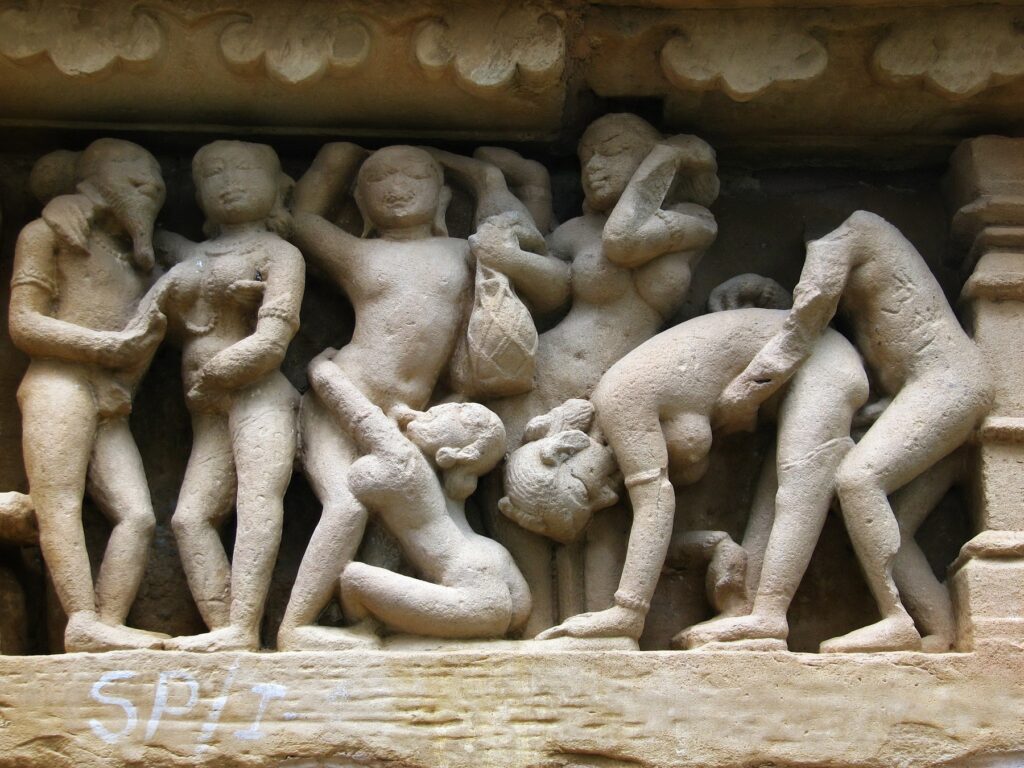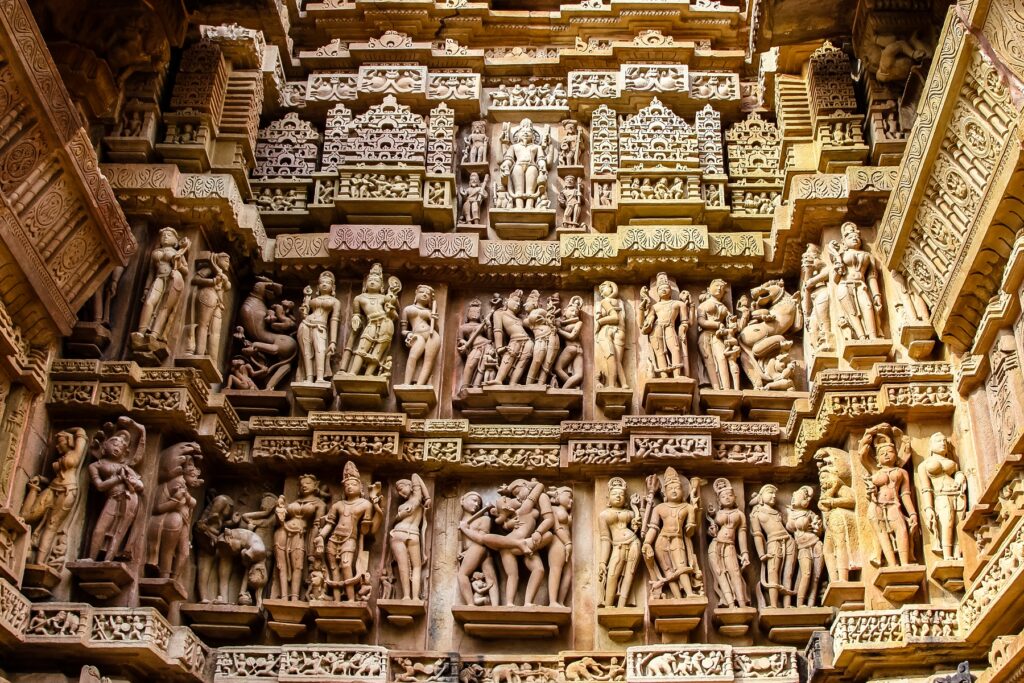Nestled amidst the lush greenery of Madhya Pradesh, Khajuraho is a UNESCO World Heritage Site renowned for its stunning temples adorned with intricate carvings and sculptures. These ancient masterpieces, dating back to the 10th and 11th centuries, showcase the exquisite artistry and architectural brilliance of the Chandela dynasty. Let’s embark on a journey to explore the mystique of Khajuraho and unravel the secrets hidden within its sacred precincts.
A Glimpse into History

Khajuraho rose to prominence during the Chandela dynasty, which ruled over the region from the 9th to the 13th centuries. It was during this period that the famous temples of Khajuraho were constructed, under the patronage of Chandela rulers who were known for their love of art and culture. The temples were built to honor various Hindu deities, with each temple dedicated to a specific god or goddess.
Architectural Marvels

The temples of Khajuraho are renowned for their exquisite architecture and intricate carvings, which depict scenes from Hindu mythology, everyday life, and eroticism. The intricate detailing and craftsmanship of the sculptures are a testament to the skill and creativity of the artisans who created them. Among the most famous temples are the Kandariya Mahadeva Temple, Lakshmana Temple, and Vishvanatha Temple, each adorned with elaborate carvings and towering spires.
Spiritual Significance

Beyond their architectural beauty, the temples of Khajuraho hold deep spiritual significance for devotees and pilgrims. They serve as centers of worship and spiritual contemplation, drawing visitors from around the world to experience their serene ambiance and divine energy. The intricate carvings and sculptures on the temple walls are not merely decorative but are also intended to convey profound spiritual teachings and insights.
Preservation and Conservation
In recent years, efforts have been made to preserve and conserve the temples of Khajuraho, ensuring that future generations can continue to marvel at their beauty and significance. Conservation projects, undertaken by government agencies and heritage organizations, aim to protect the temples from environmental degradation, vandalism, and other threats, while also promoting sustainable tourism practices.
Conclusion
Khajuraho is more than just a collection of temples – it is a testament to India’s rich cultural heritage and artistic legacy. From its stunning architecture to its intricate carvings and spiritual significance, Khajuraho continues to captivate and inspire visitors from around the world. As we explore its ancient temples and unravel the mysteries of its past, we are reminded of the enduring legacy of the Chandela dynasty and the timeless beauty of Indian art and culture.
—
This article provides an overview of Khajuraho, highlighting its historical significance, architectural beauty, and spiritual importance.


